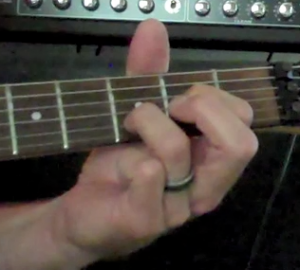Learning to Play the Guitar: Easy Exercises for Beginners That Will Help Improve Your Skill
If you’re learning to play the guitar, it’s important to commit to practicing guitar exercises if you want to improve your skills. Guitar fingering and strumming practice sessions are great guitar exercises for beginners and they can also be used as a warm-up for intermediate and advanced players. Done regularly, they’ll improve you finger placement, enhance your strumming abilities and make you more comfortable with your guitar. They’ll also provide a much-needed workout for your fingers and improve your dexterity and coordination–important skills for any aspiring guitarist. Keep reading to learn more about some easy beginner’s exercise techniques that will have you playing more skillfully in no time.
Strengthening Your Fingers and Hands
As a guitarist, you’ll need strong hands and flexible fingers if you want to be able to play for long periods of time. Strengthening your hands and fingers will also help you learn to play faster and more precisely. To be effective, strengthening exercises should be done every day. For beginners, start out with 15 minute sessions and gradually increase your time as you improve. So, what are the best ways to get strong, flexible hands and fingers? Here are some tools and techniques you can use that will make the task a lot easier:
Improving your grip strength is important for guitarists. To improve your crush grip strength, try using a set of grippers. There are many gripper products available, but the objective is the same no matter what kind you buy: To squeeze the grippers closed until the handles touch. Used regularly, they can really strengthen your grip and allow you to play the guitar longer without fatigue.
Like your crush grip strength, your pinch grip strength will also affect how well you play the guitar. A better pinch grip will lead to better fret finger positioning and more precise chord playing. To improve your pinch grip, try a technique called plate pinching. To do it, place two or more weight plates standing upright together on the floor and lift them up by pinching them. Start with less plates at smaller weights, and gradually increase the weights and number of plates as you improve. If you’re just starting, try pinch lifting 3 or 4 10-pound plates and go from there.
Playing with Chinese exercise balls is a great way to improve your hand coordination and agility. Using them regularly can greatly improve your guitar fingerings and your playing speed–and they’re fun to play with. Chinese exercise balls are simply two small metal balls that are maneuvered in different directions in one hand. There are many different exercises you can do with them; the product manual that comes with most sets of exercise balls should outline some basic techniques.
Guitar Fingering Exercises
There are plenty of simple guitar exercises involving fingering you can practice on your guitar to improve your strength and chord-playing accuracy. Here’s a simple technique to start with that can be done on any string and on any fretboard position:
Work on one string, and place your four fingers on adjacent frets anywhere on that string.
Lift two fingers that aren’t adjacent off the string while keeping the other two fingers in position on the fret.
Put your lifted fingers back in their original position and lift the other two fingers off the fretboard.
Repeat this exercise for 5-10 minutes, gradually increasing speed while maintaing finger positioning accuracy.
Guitar Strumming Exercises
There are two basic guitar strumming strokes: The downstroke and the upstroke. The downstroke is the motion of moving the pick across the strings in a downward direction, and is typically easy for most players to learn. The upstroke can feel a bit unnatural at first, since it involves moving the pick across the strings upwards towards your torso–you may want to invest in guitar strumming lessons if you struggle with this stroke. To become a better guitar player, you should practice some simple strumming exercises using both downstrokes and upstrokes each day. Here’s an easy practice session you can try at home:
For four beats, strum your guitar with a downstroke.
For the next four beats, strum you guitar with an upstroke.
On the next four beats, use a downstroke on the first and third beat and an upstroke on the second and fourth beat.
Repeat the entire pattern several times or for around 10 minutes each session.
Taking Guitar Lessons
One of the best ways to improve your playing quickly is to invest in professional lessons. You can either take a class from a guitarist or purchase course material online or on a DVD. If you’re a beginner, guitar alliance is a great online resource. Many of their course materials and exercises are free, and it’s affordable to become a member and access their extensive listing of lessons. Guitar lessons are really necessary as you advance your skills and want to start learning more complicated techniques.
Just like with any skill, practice makes perfect when it comes to the guitar. Try to devote some time each day to strengthening your hands, fingers and wrists and work on basic fingering and strumming skills before you try and tackle any songs. And don’t forget: Lessons are the best way to improve your new skill quickly.








